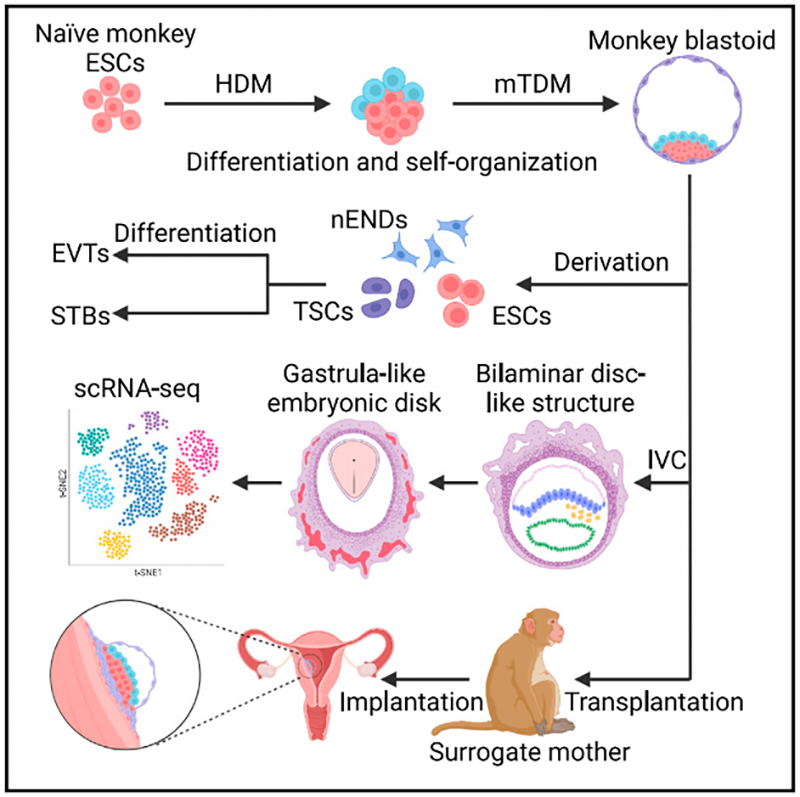Time:2023-04-07
A recent study published in Cell Stem Cell reported the generation of monkey blastoids using naive ESCs and optimized protocol. In-vitro cultured monkey blastoids recapitulate gastrulation-like stage to germ layer formation. In-vivo transplantation of monkey blastoids triggers early pregnancy with gestation sacs. This study developed a potentially valuable system in investigating primate embryonic development.
This research was completed by LIU Zhen's research team and SUN Qiang's research team at the Institute of Neuroscience, Center for Excellence in Brain Science and Intelligence Technology of the Chinese Academy of Sciences, and Zhou Fan's research team of the Tsinghua University.
Stem cell-based embryo model provides important approaches for dissecting embryonic development and understanding related disease, such as early abortion. Previous reported mouse embryo model and human embryo model exist concerns on either large species difference or ethical limitation. Molecular mechanisms underlying human embryogenesis and organogenesis also remain largely unclear. As evolutionarily closely related species to human, money embryo model will deepen the understanding in human embryonic development and early abortion.
In their study, LIU and colleagues used techniques such as na?ve embryonic stem cell culture, optimized two-step blastoids induction protocol and embryo in-vitro prolonged culture system. They used morphology analysis, single-cell RNA-seq, in-vitro prolonged culture and in-vivo transplantation to assess the similarity between the blastoids and blastocysts.
The prolonged cultured embryo model could include cells of germ layers with a gastrulation-like stage. This has not even been achieved in the study of in-vitro prolonged culture of natural monkey blastocysts. They found the in-vivo transplantation of blastoids could trigger early pregnancy with increased progesterone levels and presence of early gestation sacs, even though no fetus observed.
Two directions deserve further studies. First is improving the blastoids induction and in-vitro prolonged culture system. This will help to achieve further embryogenesis in monkey stem cell-based embryo model study. Second is the application of monkey blastoids system in dissecting genetic mechanism of primate embryonic development.
This work entitled “Cynomolgus monkey embryo model captures gastrulation and early pregnancy” was published online in Cell Stem Cell on April 6, 2023.
The research project is designed and performed under extremely stringent ethical administration. All experiments are under the guideline of International Society for Stem Cell Research (ISSCR). An ethical committee in the Institute of Neuroscience helped to make sure the study is ethically sound.
Considering the possible ethical concerns caused by monkey stem-cell-based model study, reaching a rational balance between scientific research and ethical concerns is necessary. More discussions and communications between scientific community and the public will help the development of this field.

Figure 1. A diagram summary of the major findings of this study.
Keywords: Cynomolgus Monkey; Embryo Model ; Early Pregnancy
AUTHOR CONTACT:
LIU Zhen
Center for Excellence in Brain Science and Intelligence Technology of the Chinese Academy of Sciences, China.
E-mail:zliu2010@ion.ac.cn
 附件下载:
附件下载: